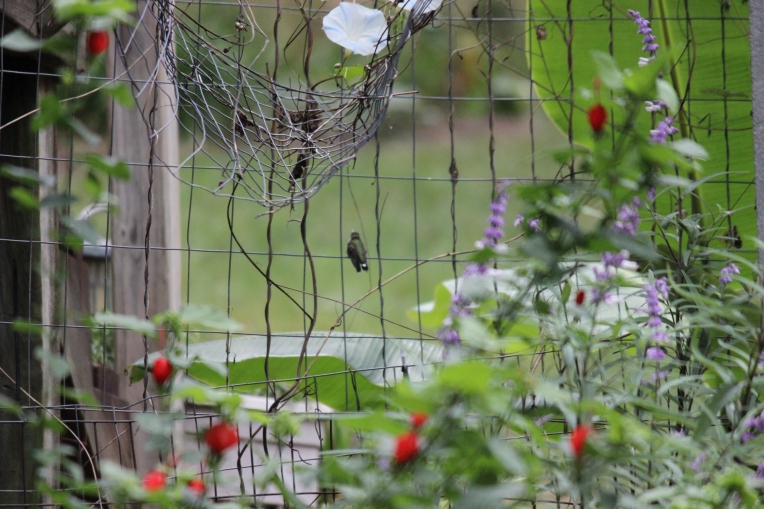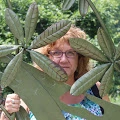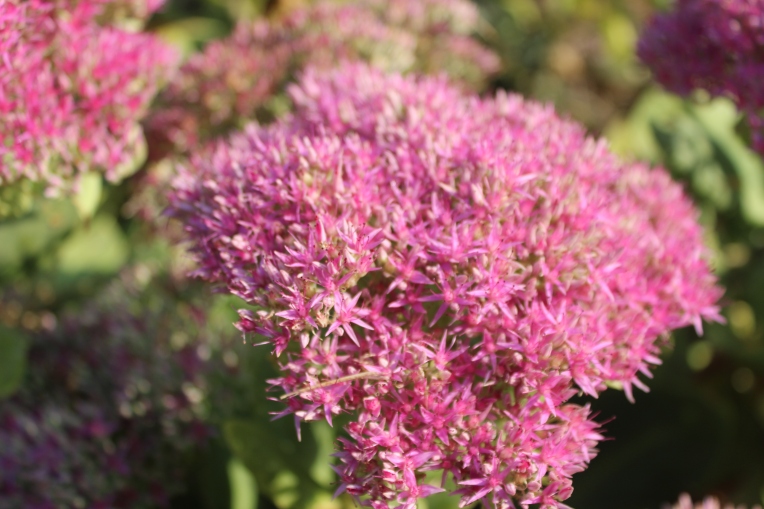Pumpkins show up in my gardens due to our composting.
To show my appreciation, I eat them.

This little pumpkin will make one pie.
I used a head-sized pumpkin for this post, which makes two pies.
Cut your pumpkin in half and remove pulp and seeds.
Soak this blob in water so as pull out the seeds more easily.

Then rinse seeds in a colander. Dry them off a bit .
Toss with olive oil and salt. Spread seeds out on a cookie sheet covered in parchment paper. You should stir and re-spread these at least once during roasting.
Then place them in your preheating oven to roast while you make the pie filling.

Slice up the pumpkin into 1 inch strips. Place these into a pan with an inch or so of water. Cover an simmer until tender.

Take slices out of water and let them cool some before trying to scrape the meat out of the skin.
Mash up the pumpkin flesh. Measure it out into two-cup portions per pie.

I add one can of evaporated milk, 2 beaten eggs, and 3/4 cup brown sugar.
Spices may be one and a half teaspoons of pumpkin spice OR half a teaspoons each of ground cinnamon, ginger and nutmeg. Also, one half teaspoon of salt. My version also adds a tablespoon of flour to firm up the filling.
I used frozen crusts that roll out into the pie pan. Don’t hate me for this. I don’t do crusts.
I like to add extra ingredients for texture and zing. This can be sprinkling chopped nuts or coconut on top. Sometimes I add a half a teaspoon of orange flavoring. To sweeten them up, you can sprinkle raw sugar crystals on top.

If you add extra ingredients, you will have too much filling. Do not over-fill the crusts. Put the extra filling in a small baking dish and bake it with the pies. (400 degrees for 40 minutes)
Your family can munch on the roasted seeds while the pies bake and then eat the little extra filling while the pies are cooling.

These snacks help protect the pies you are trying to save for the company.

FLOUR























































































